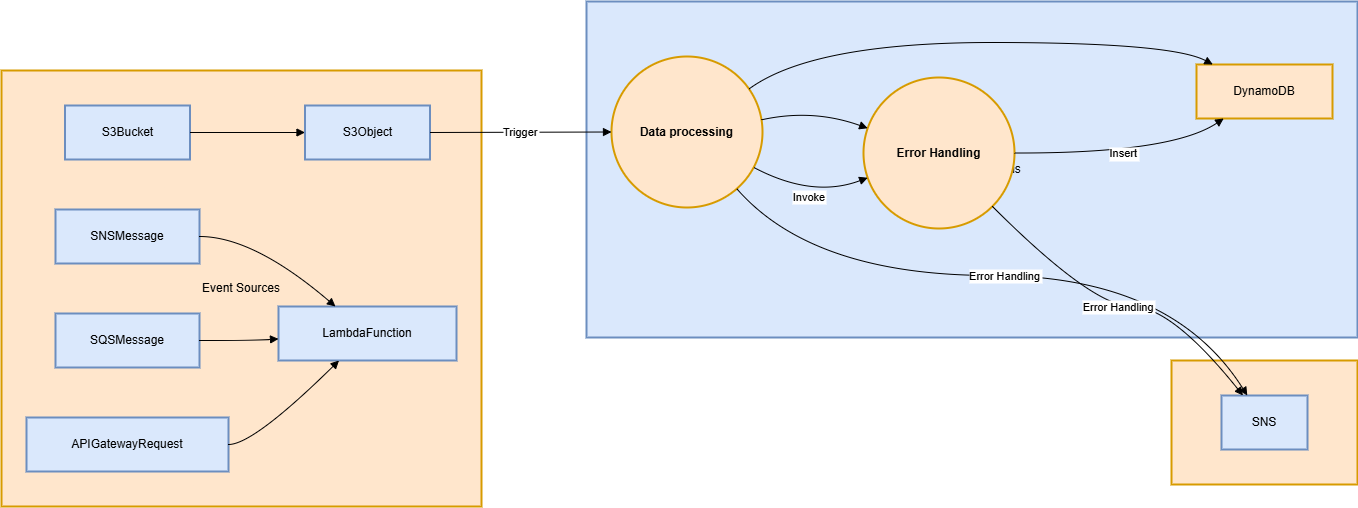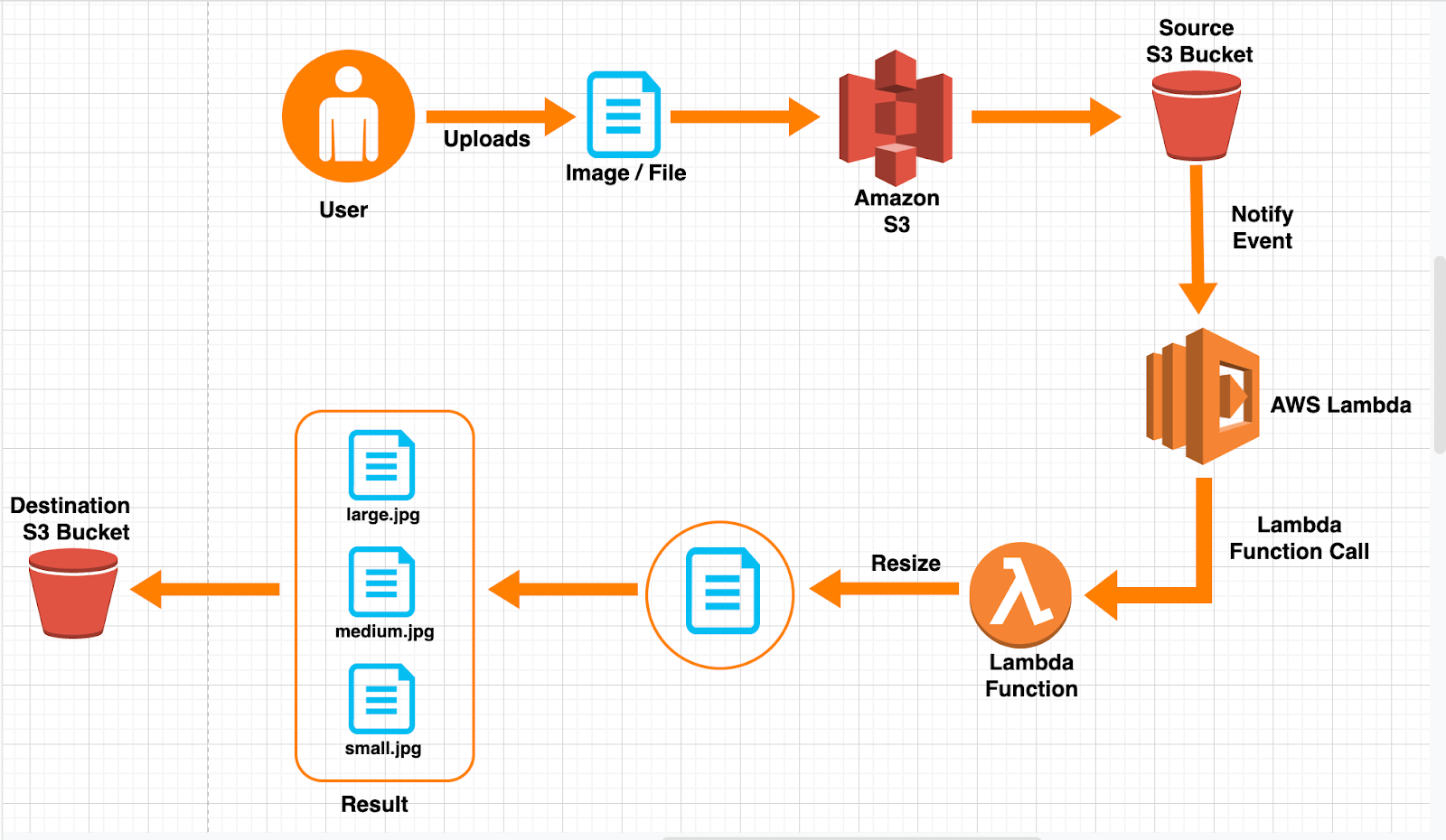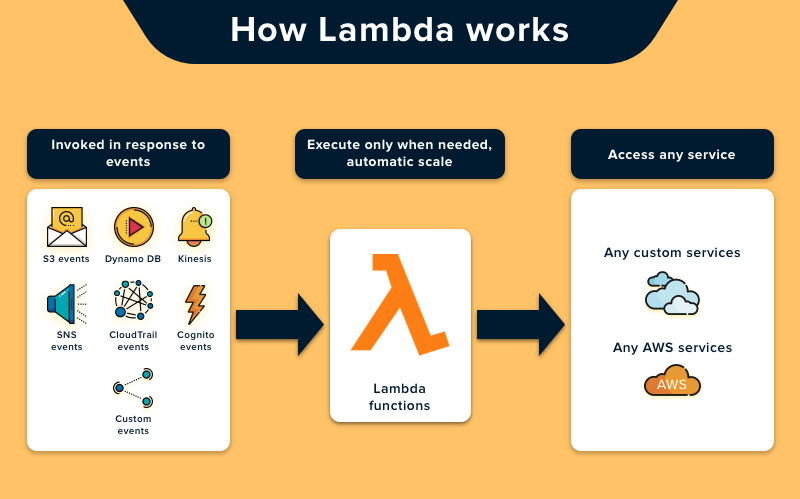AWS Lambda: from basics to advance
 Maitry Patel
Maitry PatelEver wondered what AWS Lambda is all about but weren’t sure where to begin? Or maybe you have tried it once or twice and feel ready to level up? This blog series will guide you — starting from basics and moving towards advanced, real-world examples. Whether you are developer, cloud enthusiast, or someone curious about serverless tech, you are in the right place.
let’s Get Started!
What is AWS Lambda?
AWS lambda is a serverless compute service that automatically runs your code in response to events — no need to manage servers. you write the code, and Lambda takes care of the rest: scaling, provisioning, and running only when triggered.

Architecture of the lambda service is illustrated above.
The diagram above illustrates a practical AWS Lambda workflow, showing how different AWS services interact seamlessly. It starts with event sources like S3, SNS, SQS, or API Gateway triggering a Lambda function. This function kicks off the Data Processing phase — for example, transforming data, handling API requests, or processing files. If everything goes smoothly, the processed data is stored in DynamoDB. But if something goes wrong, the system doesn’t stop there — the Error Handling function steps in to manage failures. It logs errors, retries processes, and even sends alerts via SNS (Simple Notification Service) to keep you informed. This setup ensures your application stays resilient and responsive, even when errors occur — a perfect example of building fault-tolerant, event-driven architecture with AWS Lambda.
key highlights:
No server management: Focus on code, AWS handles infrastructure.
Automatic scaling: From one request to thousand per second.
Pay for what you use: Billed per millisecond of execution time.
Event-driven: Triggers from S3, API Gateway, DynamoDB, and more
Why use lambda?
here are some uses of Lambda:
Cost-effective: No idle server costs — you’re charged only when the function runs.
High scalability: Automatically handles traffic spikes and scales to zero.
Rapid development: Focus on code and business logic, not infrastructure.
Seamless integrations: Easily connects with AWS services like S3, SNS, DynamoDB, API Gateway, and Step Functions.
Examples Use Cases:
Backend APIs: Build lightweight RESTful APIs without provisioning servers.
Data processing: Process S3 file uploads, analyze logs, or handle IoT device data.
Automation: Trigger tasks like email notifications, database updates, or backups.
Security checks: Automatically respond to security events in your AWS environment.

How AWS Lambda works?
How AWS Lambda Works
Here’s a breakdown of the Lambda lifecycle:
1. Write your code: Supports Python, Node.js, Java, Go, Ruby, .NET, and custom runtimes.
2. Define a trigger: Events can come from API Gateway, S3, DynamoDB, SNS, EventBridge, or even scheduled events (cron jobs).
3. Configure settings: Memory, timeout, environment variables, and permissions (IAM roles).
4. Deploy: Use the console, CLI, or Infrastructure as Code (AWS SAM, Serverless Framework).
5. Lambda executes: It spins up, runs your code, and shuts down. For frequent invocations, it reuses the environment to reduce latency (warm start).
6. Log and monitor: CloudWatch Logs, AWS X-Ray, and built-in metrics help you track performance and troubleshoot error

Wrapping it up!
Why Lambda is a Game Changer
At the end of the day, AWS Lambda isn’t just about running code without servers — it’s about making development faster, easier, and more efficient. Whether you’re automating tasks, processing data, or building APIs, Lambda lets you focus on what matters: your code and your ideas — while AWS handles the tricky infrastructure stuff.
So, think about it:
What tasks are you still doing manually that Lambda could automate?
How could event-driven architecture simplify your next project?
What’s stopping you from turning your next big idea into a powerful, scalable app?
Coming up next: Let’s roll up our sleeves and build a Lambda function together!
Subscribe to my newsletter
Read articles from Maitry Patel directly inside your inbox. Subscribe to the newsletter, and don't miss out.
Written by
